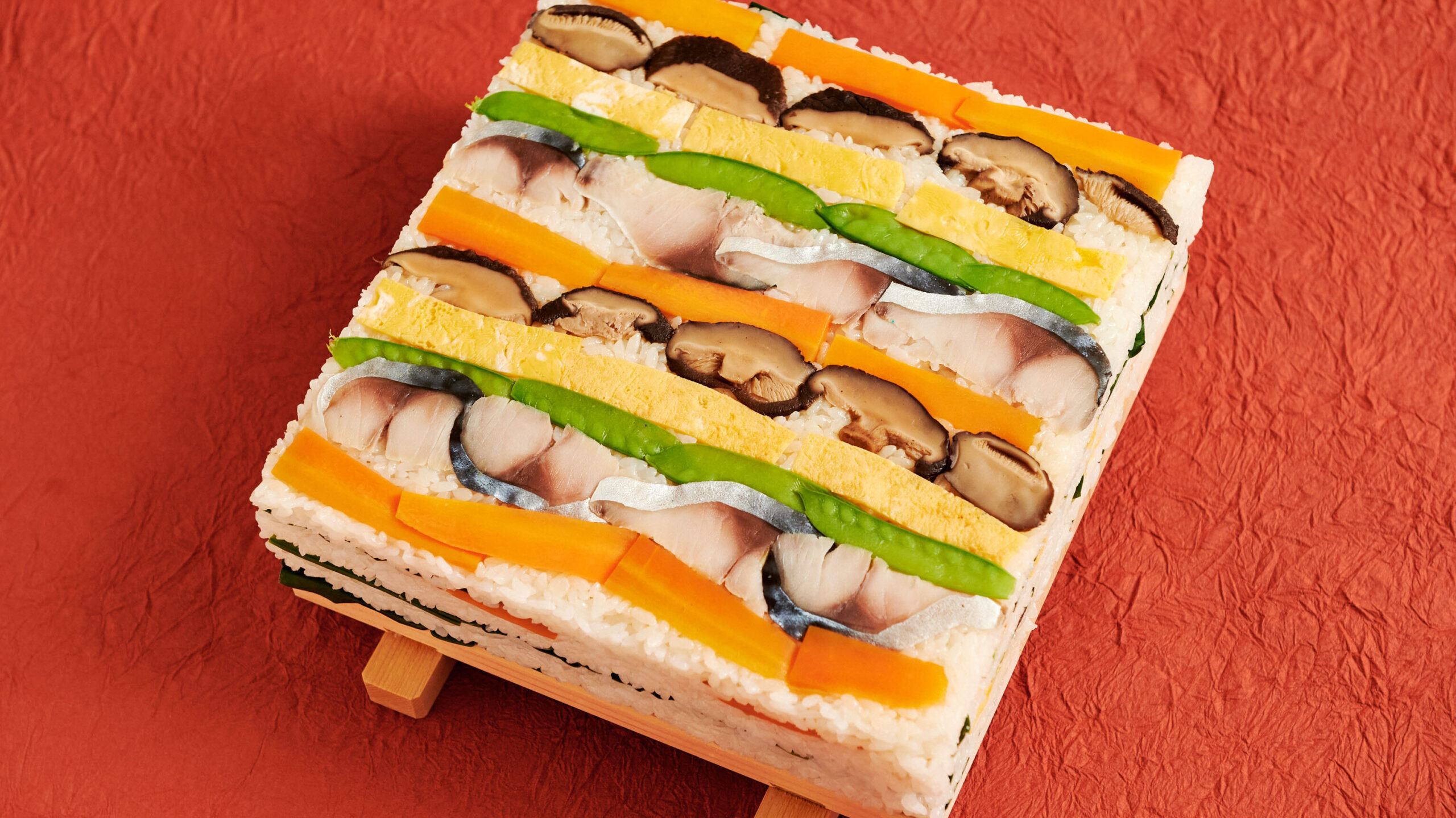
Alright, gather ’round, folks! Let me tell you about a festive dish from Mie Prefecture called Kokerazushi. It’s a type of pressed sushi that’s as beautiful as it is delicious, and it’s a real centerpiece for celebrations in the region. The name itself has a cool story behind it, so let’s get into the details.
Dish Name: Kokerazushi
- Region / Location: Higashi Kishu food culture area
- Primary Area of Tradition: Higashi Kishu area
- Main Ingredients: Rice, carrots, dried shiitake mushrooms, snap peas, pickled mackerel, eggs, and 5 colorful ingredients (fish is a must)
How It’s Eaten / Served
Kokerazushi is a pressed sushi made by layering multiple ingredients with sushi rice. Leaves are placed between the layers, and the sushi is pressed in a mold. Typically, there are 3 to 5 layers of sushi rice, ingredients, and leaves. To eat it, the mold is removed, and the stacked sushi is cut into bite-sized pieces. The layered appearance is beautiful when viewed from the side. Each piece is served, and diners remove the leaves from the top layer as they eat.
Cultural Background and Preservation
In the Higashi Kishu region, pressed sushi made in molds is commonly prepared for gatherings and celebrations. This sushi is called “Kokerazushi.” The name is said to come from it being served at kokerabuki (shingle roofing) completion ceremonies or from the way the ingredients are arranged, overlapping like shingles on a roof.
The ingredients are arranged in odd numbers, typically 5, to create a colorful presentation. One of the 5 ingredients must be fish, usually pickled. Fish such as pickled mackerel, Pacific saury, or horse mackerel, depending on the season, are used. The development of pressed sushi in this region is likely due to the abundance of wood (mainly cypress) in Higashi Kishu, which facilitated the development of sushi molds. These molds come in various sizes, holding 1 sho (approx. 1.8 liters), 5 go (approx. 0.9 liters), 3 go (approx. 0.54 liters) of rice. In addition to traditional molds, smaller, easier-to-handle molds for smaller groups, single-serving molds, and single-layer molds are now available. Large molds for 2.5 sho (approx. 4.5 liters) of rice are also used in the Sugari area of Owase City.
Leaves such as wild strawberry leaves or flower ginger leaves are used between the layers. Their aroma and compounds infuse into the sushi, enhancing its flavor. They are also said to have a preservative effect. If these leaves are not available in urban areas, mustard greens or lettuce can be used as substitutes. Bento boxes can be used as molds. The lid is inverted, the ingredients are arranged inside, and the bento box itself is used as a press.
Kokerazushi is made in large quantities for festivals, wedding celebrations, 60th birthday celebrations, and other auspicious occasions. It’s cut and shared among relatives and neighbors as a way to celebrate together. It’s a familiar dish that someone is making somewhere throughout the year.
In Mie Prefecture, sushi made in wooden molds is common. The custom of making and serving sushi to entertain guests at gatherings and celebrations remains strong.
Additional information:
- Kokerazushi (こけらずし): A type of pressed sushi made in wooden molds, characteristic of the Higashi Kishu region of Mie Prefecture.
- Higashi Kishu (東紀州): The southeastern part of Mie Prefecture.
- Kokerabuki (こけら葺き): A traditional style of roofing using thin wooden shingles.
- Sho (升): A traditional Japanese unit of volume, approximately 1.8 liters.
- Go (合): A traditional Japanese unit of volume, one-tenth of a sho, approximately 0.18 liters.
- Shime saba (しめ鯖): Mackerel pickled in vinegar.
- Bento (弁当): A Japanese-style lunchbox.
The information about regional cuisine featured on this website (Piggy's Grandma of Japan) is summarized and adapted from the Ministry of Agriculture, Forestry and Fisheries of Japan (MAFF) website, "Our Regional Cuisines"Additional commentary is provided based on the unique experiences and perspectives of the site's editors.
The copyright for the original content regarding regional cuisine belongs to the Ministry of Agriculture, Forestry and Fisheries of Japan.
The summaries and adaptations published on this site are intended for informational purposes only. Piggy's Grandma of Japan does not guarantee the accuracy or completeness of this information. For the most accurate and complete details, please refer to the original pages on the MAFF website.

